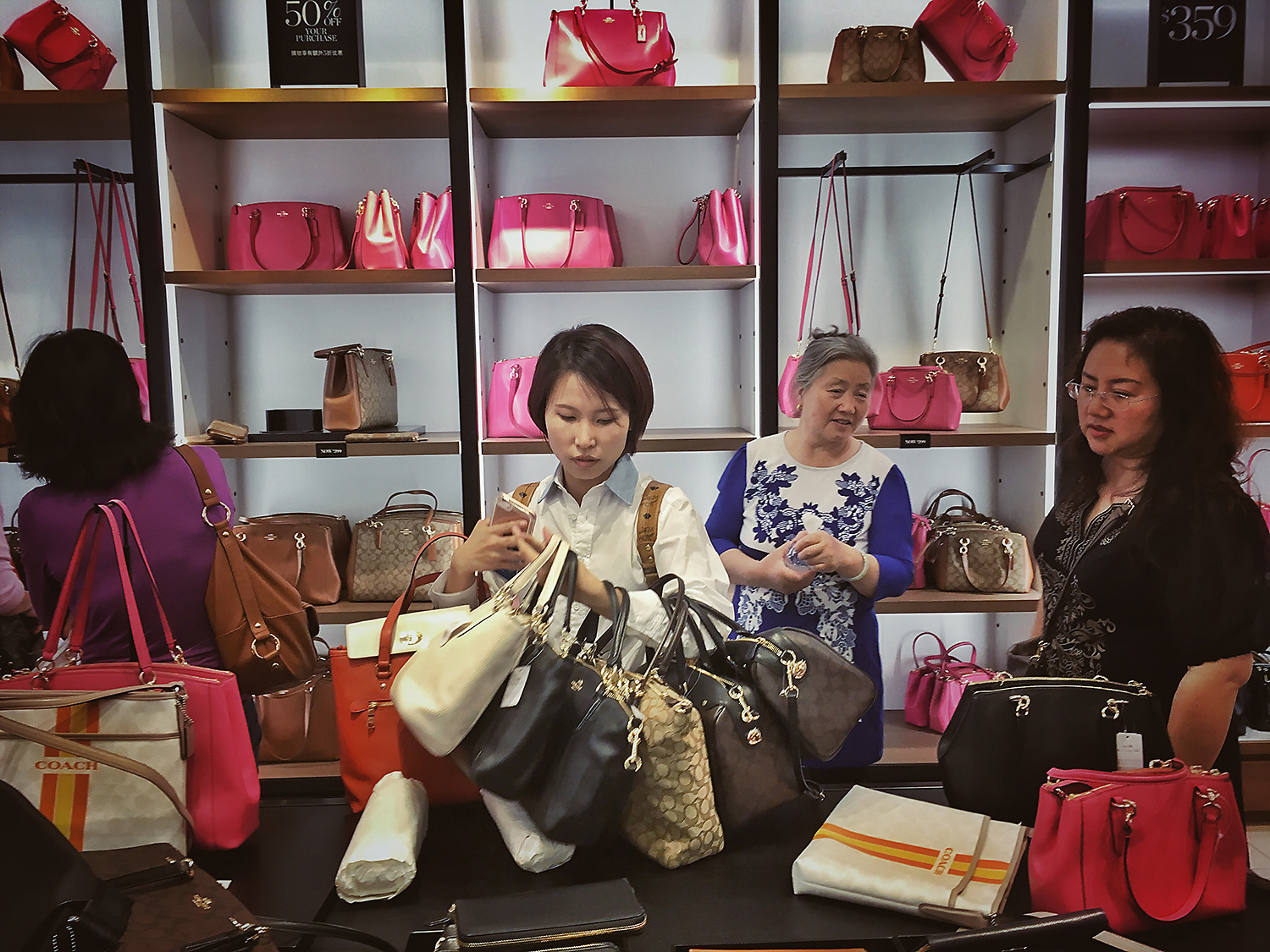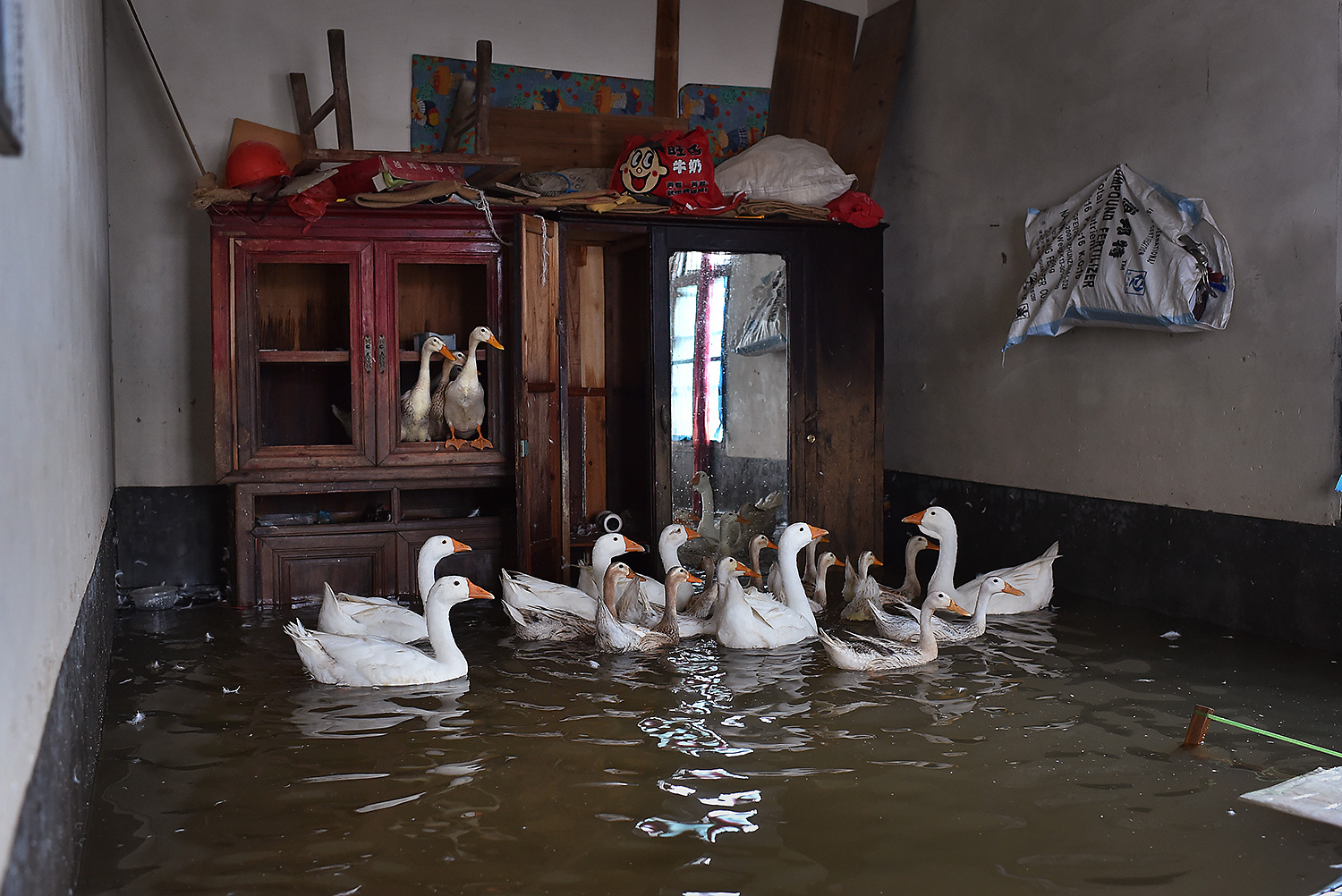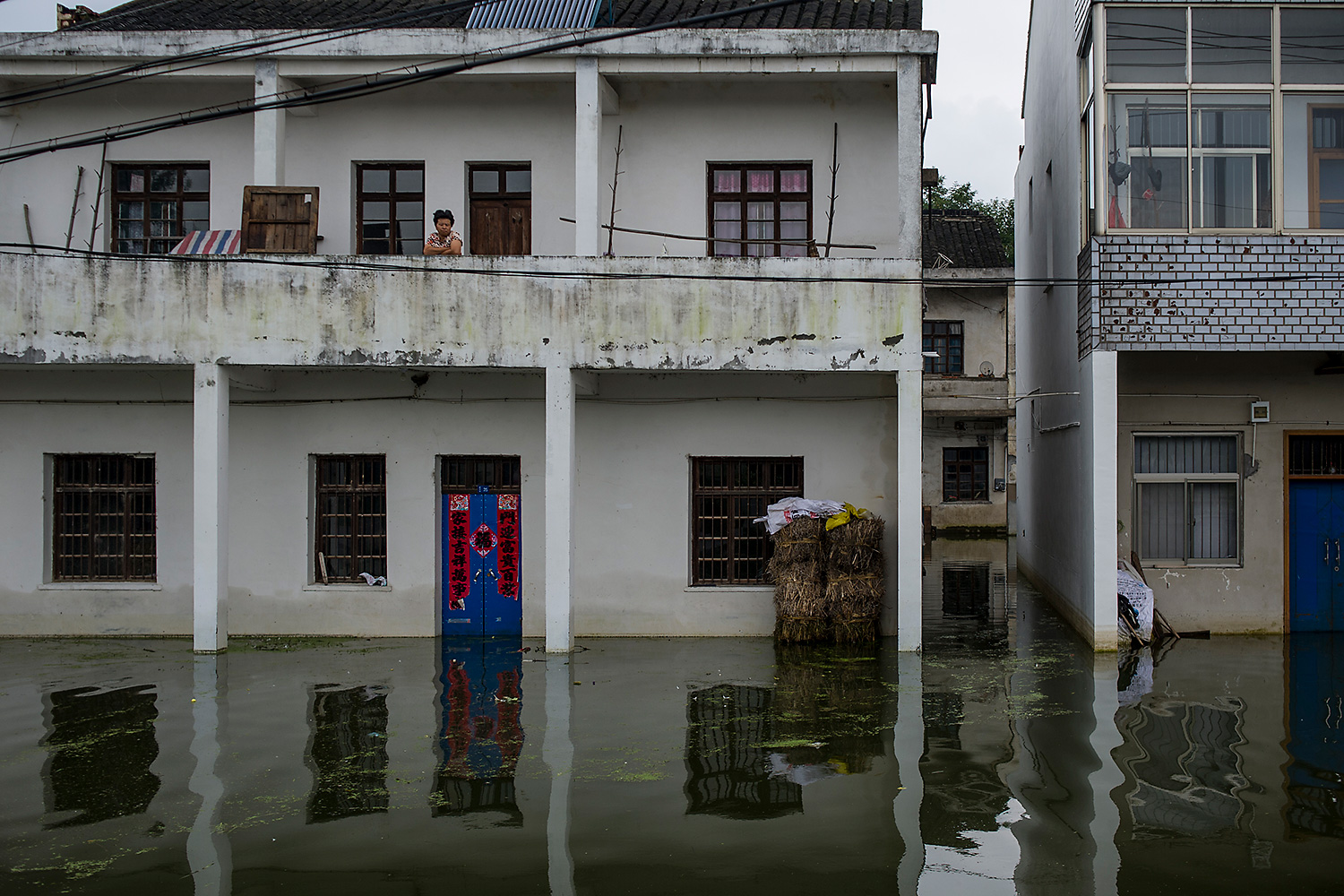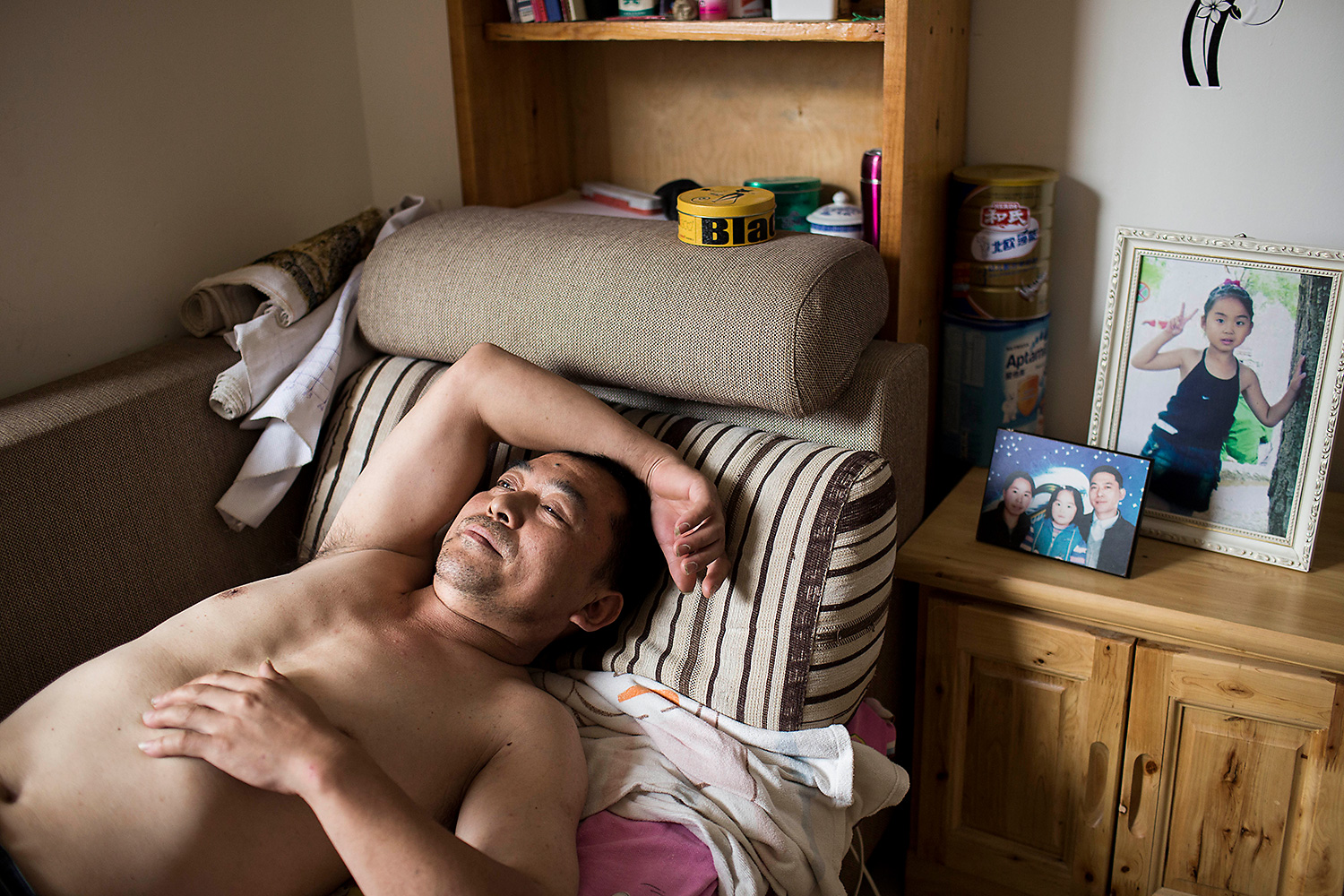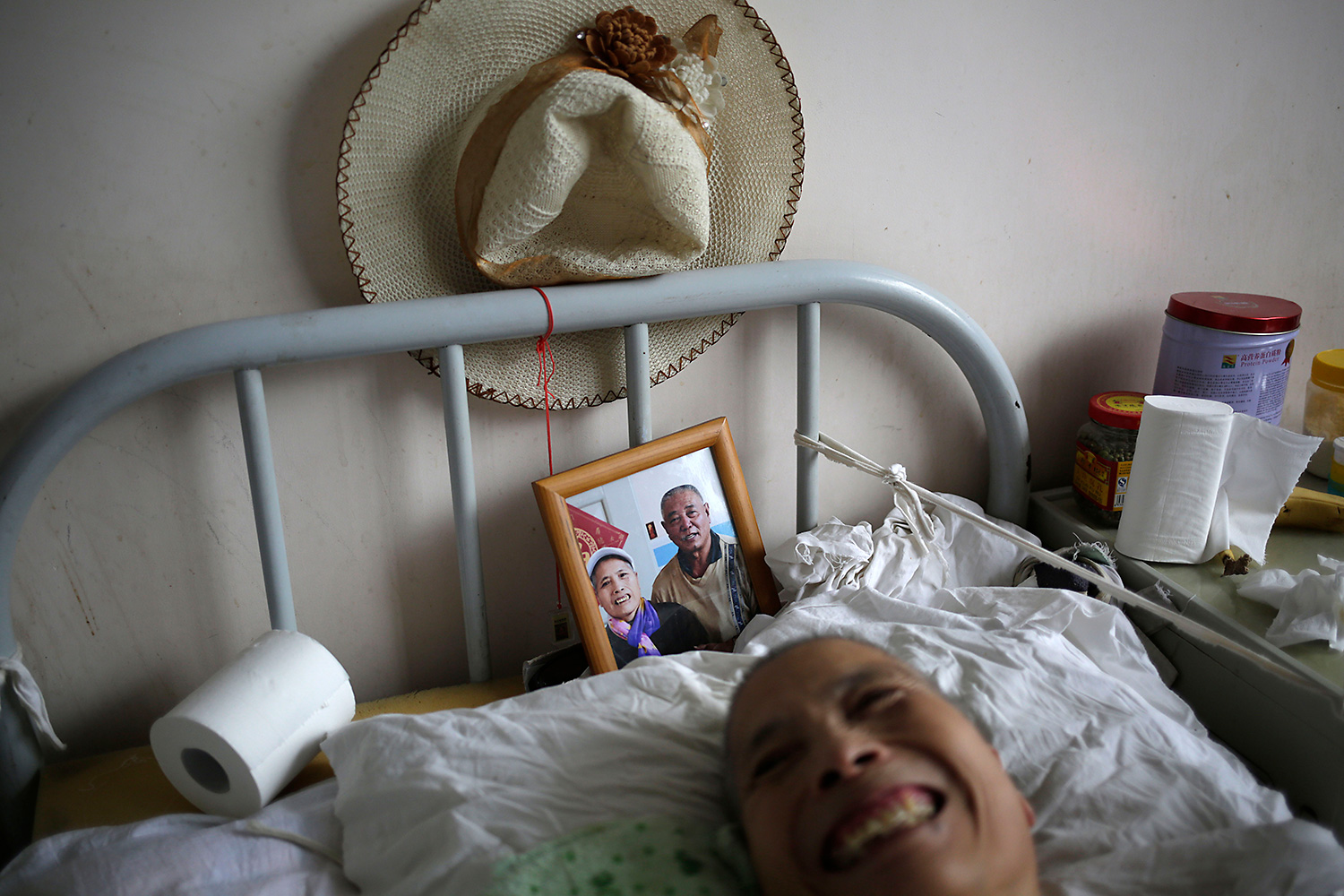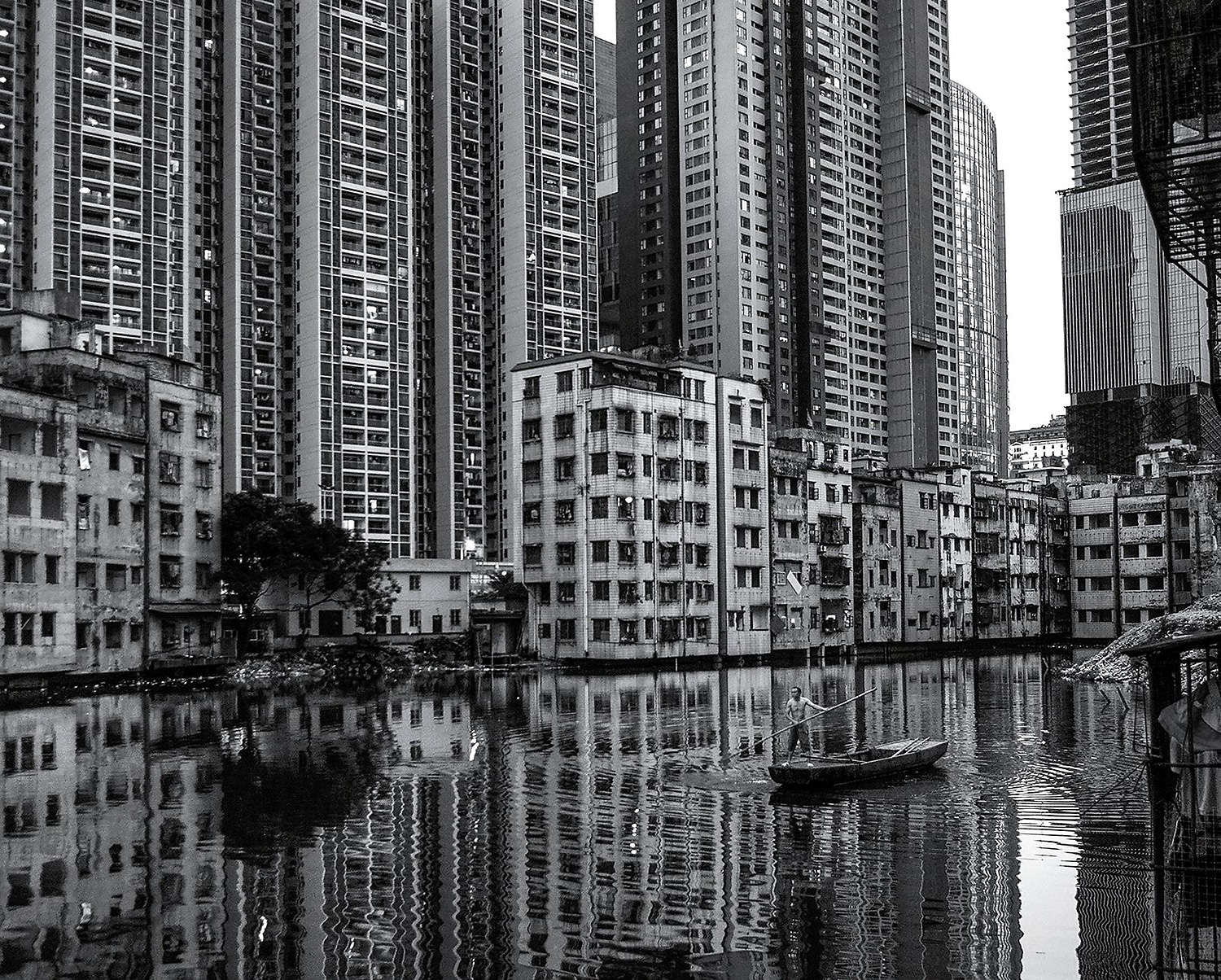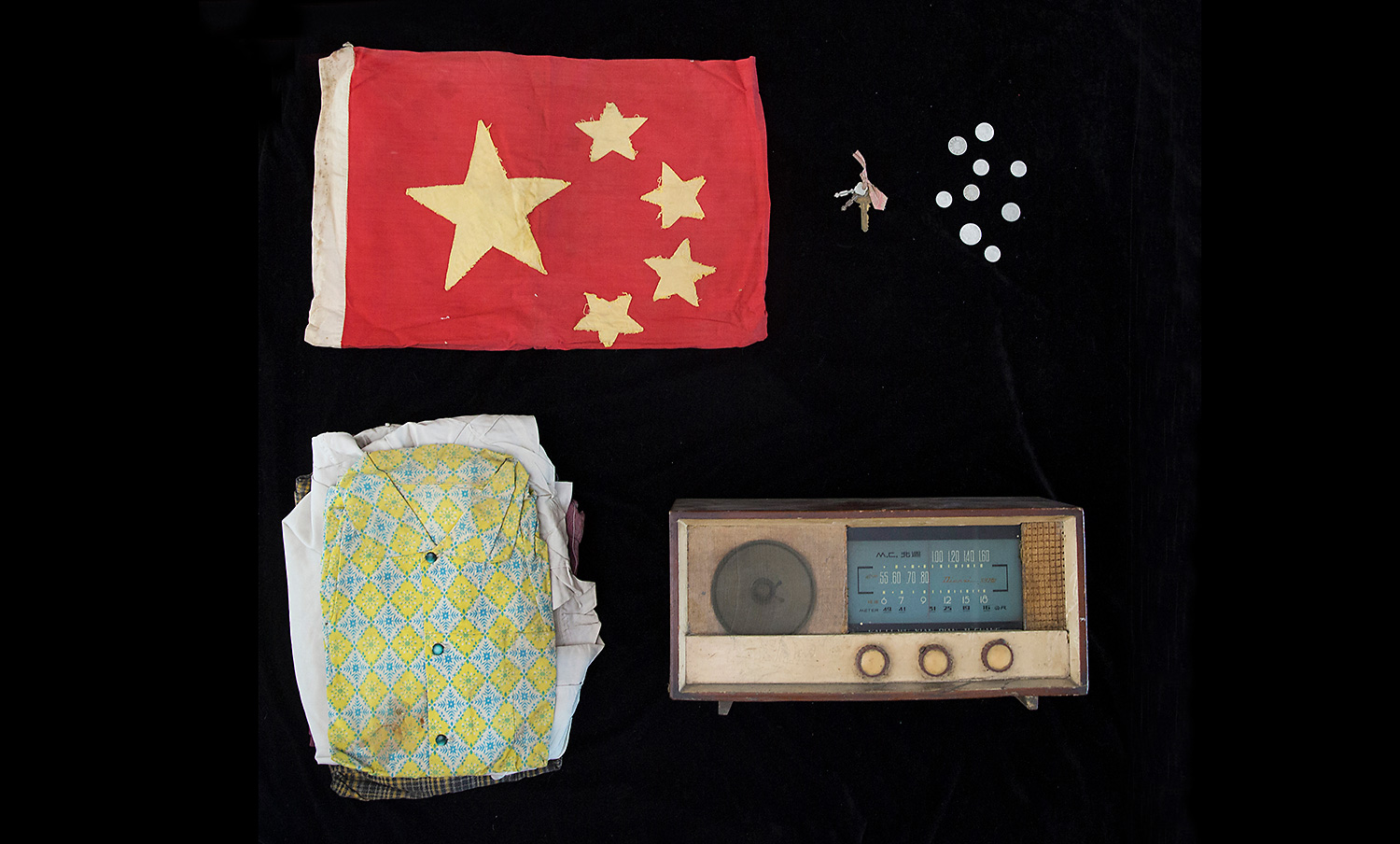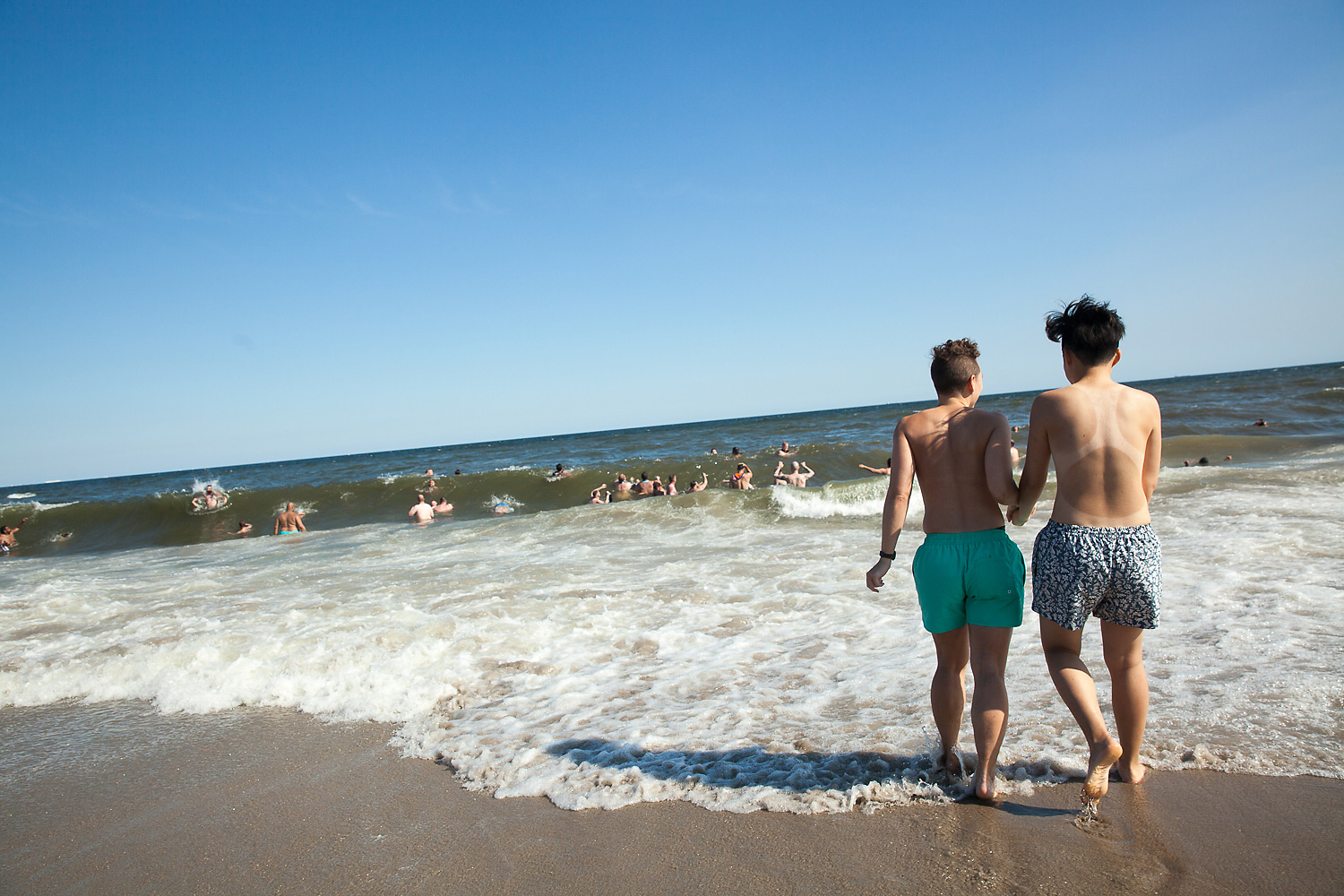Natural disasters and trend stories are the bread and butter of photojournalists and July was no exception. We bring you the work of photographers who explored the burgeoning world of cellphone celebrities, waded into flood-struck areas, and reflected on the tragedy of two of the biggest earthquakes ever to strike modern China. And don’t miss Mengwen Cao’s gallery of same-sex couples in New York with ties to the Mainland—where coverage of this topic is scant at best.
Real-time online broadcasting has become a big business in China. Every month, more than 85 million people watch live broadcasts on cellphone apps, according to statistics published by QuestMobile, a mobile Internet consulting company. Photographer Wan Jia’s subjects include a pole dancer, a street singer, a gym trainer, a comedian, and a fashion blogger: all of whom use online broadcasting platforms to showcase their talent, expand their business, and make money.
In 2015, Chinese consumer purchases accounted for 31 percent of the world’s luxury product purchases. But because China’s import tax on foreign goods remain hefty, Chinese spend four times more purchasing luxury goods abroad than at home. Photographer Wu Jiaxiang documents the life in America of daigou, or “buying for”—Chinese living overseas who help customers on the Mainland purchase luxury goods at lower prices. In the United States, many daigou graduated from American colleges or are accompanying spouses studying or working in the United States. By connecting in person, or through social media platforms like Weibo and WeChat, daigou can avoid fees and taxes for their clients—and make as much as $10,000 a month for themselves.
Millions of people living in the Yangtze River basin had to evacuate after four days of huge rainstorms in early July. Photographer Jiang Hai found some villagers in Nanling County, Anhui province, who chose to stay amid rising flood waters—despite the difficult living conditions, a rising death toll, and a lack of access to drinking water or electricity.
By the time the July floods began to recede, the vast majority of journalists already had left the affected areas. Photographer Li Junhui bucked the trend: He stayed behind in Yixing city, Jiangsu province, and visited three townships badly hit by the flood. Geese farming and crab farming are common in this area, but most of the animals didn’t survive, causing great loss to the villagers. The waterscapes in Li’s photos show an otherworldly reality.
Photographer Zhou Qiang documents two families who lost their only children in the May 12, 2008 Sichuan earthquake. Despite the women’s age—one was in her late 30s, one in her early 40s—both decided to have another child in the years following the earthquake. The photographer captures the struggles of raising children at an advanced age, and the moral complexities of having another child to replace one who died.
Photographer Hang Meng profiles the residents of Songtang Hospice in Beijing, which was China’s first palliative care center when it opened in 1987. In part due to the Chinese belief that dying people bring bad luck, the hospice has had to move seven times in its 29-year history. According to a 2015 global study of death by The Economist, China ranked 71 out of 80 for level of palliative health care environment—well below average across five key indicators, including quality and affordability of care.
Local government’s expropriation of urban villages for developers is not a new story in China, the lengths that many villagers go to to hold on to their land have been a popular subject for photographers for several years. Independent photographer Zhang Zhiyou chose Xian, one of the few remaining urban villages in the metropolis of Guangzhou, to focus on. Xian’s residents struggle to maintain their way of life while prices of nearby high-rises have soared to 80,000 yuan per square meter (U.S.$1,118 per square foot).
July 28 marked the 40th anniversary of the Tangshan earthquake, which killed more than 240,000 people. Photographer Wan Jia created a photo essay of survivors and their contemporary belongings—including objects such as clocks, radios, and pins decorated with the face of China’s then leader Mao Zedong, who died just six weeks after the earthquake.
As the fight for freedom of expressing their sexuality continues to rage in China, many LGBT Chinese have found a safe haven—and a partner—in America. Cao Mengwen documents the love stories of six couples living in New York. Chinese media in recent years has become more accepting of covering LGBTQ issues. “At its core, LGBT is about love,” one of the subjects says. “How can you derogate love?”





